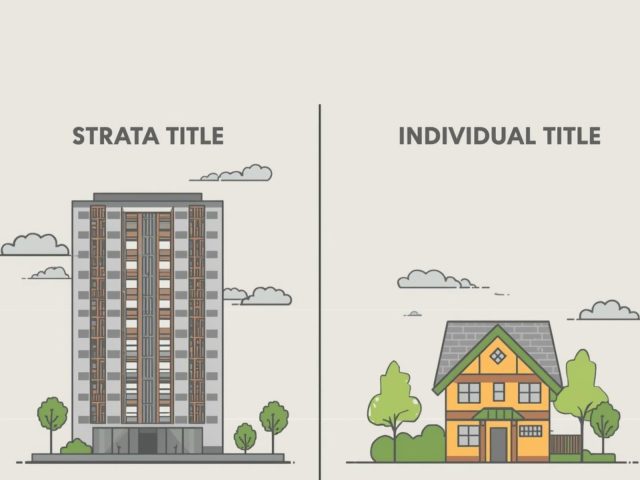Blog
Introduction
Fire safety is a fundamental component of building maintenance that directly influences occupant safety, operational continuity, and regulatory compliance. In Malaysia, fire safety is a critical consideration across various sectors, including residential high-rises, heritage buildings, and public institutions. Proper maintenance of fire protection systems, regular inspections, and staff preparedness are essential to ensure these buildings remain safe and compliant with regulations such as the Fire Services Act 1988 [1][2].
This article discusses why fire safety measures must be continuously maintained and supported by public education, robust frameworks, and periodic system reviews. It explores existing challenges in Malaysia and emphasises the need for a proactive and holistic approach to ensure safety in all building types.
- Legal Compliance and System Oversight
The foundation of fire safety management in Malaysia is established under the Fire Services Act 1988, which mandates that all buildings be equipped with functional fire protection systems, including alarms, extinguishers, and clear evacuation routes [1]. The Act further obligates owners to perform routine checks and obtain Fire Certificates.However, in practice, enforcement and maintenance of fire protection systems can vary across facilities. For instance, some public hospitals face challenges such as older systems, complex management responsibilities, and limited staff training [3]. Addressing these factors is essential to ensure that all equipment remains fully functional and effective during emergencies.
- Awareness and Behavioural Preparedness
Effective fire safety involves more than infrastructure, it requires an informed public. While general awareness of fire risks exists among Malaysians, practical skills such as using fire extinguishers or following evacuation procedures may need reinforcement [4]. Similarly, residents in high-rise buildings may benefit from additional guidance to fully understand and utilise available fire prevention systems [2].Regular educational campaigns, fire drills, and visual guides are important tools to strengthen preparedness. Even in institutions with ongoing safety programs, repeated engagement and hands-on training ideally conducted at least biannually help ensure that occupants remain familiar with escape routes and emergency procedures [5].
- Safety in Complex and Heritage Structures
Different building typologies face unique fire safety challenges. For example, in some high-rise residences or commercial buildings, emergency exits were often blocked, poorly marked, or inaccessible due to structural flaws or neglect [6]. Similarly, heritage and older buildings in Malaysia may face challenges in incorporating modern fire safety upgrades because of conservation requirements, legacy layouts, or budgetary considerations [7].These settings require tailored maintenance strategies that balance safety, functionality, and preservation. Practical solutions include retrofitting concealed fire suppression systems, improving signage and egress routes, and conducting regular inspections to ensure all fire safety measures are effectively operational.
- Systematic Management and Institutional Commitment
Effective implementation of evacuation strategies in high-rise buildings can be challenged by factors such as obstructed exits, inoperative alarms, or limited staff coordination, which may stem from gaps in maintenance routines [8]. Similar challenges can be observed in university residential colleges, where inspections or signage updates may not always be timely [9].
In order to overcome the lack of systematic fire safety routines in buildings, fire safety management plan needs to be done, with a particular emphasis on frequent audits, leadership accountability, and risk mitigation plans [10]. Still, institutional inertia and budget constraints often limit implementation. Building management should issue maintenance guidelines to address these issues, with a particular focus on personnel training, consistent checklists, and clear maintenance schedules [11]. - Bridging the Implementation Gap
While plans and policies may exist, their real-world execution is often fragmented, especially with regards to implementation in heritage buildings [12]. Ensuring that procedures are consistently followed highlights the importance of interdepartmental coordination and adequate resource allocation.To address the implementation gap, building stakeholders should conduct fire safety audits quarterly, maintain logbooks for equipment testing and maintenance, regularly train maintenance staff and occupants and fully integrate fire safety aspects during early design or renovation stages.
- Legal Compliance and System Oversight
Conclusion
Fire safety is an essential and integrated component of building maintenance. Effective management requires not only functional systems but also informed occupants, trained personnel, and consistent oversight. As Malaysia’s urban landscape continues to evolve, maintaining fire safety through regular inspections, preventive maintenance, and ongoing education should be considered standard practice.
Across all building types, including heritage sites, hospitals, or high-rise apartments, prioritising fire safety ensures the protection of lives, property, and public confidence. By fostering a culture of awareness and accountability, building managers can achieve safer environments while meeting regulatory requirements and operational standards.
References
[1] Fire and Rescue Department Malaysia. (2018). Fire Services Act 1988 (Act 341). Retrieved on 21st July 2023 from https://www.bomba.gov.my/wp-content/uploads/2021/07/Act_341_Fire_services_act_1988.pdf/
[2] Rosdi, M. A., Sarpin, N., Kai Chen, G., & Shafii, H. (2022). Pengetahuan dalam penggunaan sistem pencegahan kebakaran dalam kalangan penghuni bangunan kediaman bertingkat. Research in Management of Technology and Business, 3(2), 455–466. Retrieved on 21st July 2023 from https://publisher.uthm.edu.my/periodicals/index.php/rmtb/article/view/9569/
[3] Ong, C.W. & Sulieman, M.Z. (2015). Problems in Implementation of Fire Safety Management in Malaysia Government Hospital. ResearchGate. Retrieved on 21st July 2023 from
https://www.researchgate.net/publication/303814569_Problems_in_Implementation_of_Fire_Safety_Management_in_Malaysia_Government_Hospital/
[4] Rashid, M. N., Sulaiman, A., & Mahyuddin, M. (2012). Exploring fire safety awareness among the Malaysian public. Retrieved on 21st July 2023 from
https://www.researchgate.net/publication/274376059_EXPLORING_FIRE_SAFETY_AWARENESS_AMONG_THE_MALAYSIAN_PUBLIC/
[5] Chyi, S. W. J. (2022). A study on fire safety & awareness among the occupants in Universiti Tunku Abdul Rahman (UTAR), Kampar campus. Retrieved on 21st July 2023 from http://eprints.utar.edu.my/5805/1/fyp_EO_2022_WSJC.pdf
[6] Hashemian, S. M. (2014). Fire safety in high rise residential building in Malaysia. Universiti Teknologi Malaysia Institutional Repository. Retrieved on 21st July 2023 from http://eprints.utm.my/78022/1/SeyedMohammadHashemianMFKA20141.pdf
[7] Roslan, R., & Said, S. Y. (2017). Fire safety management system for heritage buildings in Malaysia. Environment-Behaviour Proceedings Journal, 2(6), 221–226. Retrieved on 21st July 2023 from https://ebpj.e-iph.co.uk/index.php/EBProceedings/article/view/961/
[8] Akashah, F.W., Baaki, T.K., Anuar, M. F., Azmi, N. F., & Yahya, Z. (2020). Factors affecting adoption of emergency evacuation strategies in high-rise office buildings. Journal of Design and Built Environment, 20(3), 1–21. Retrieved on 21st July 2023 from https://ejournal.um.edu.my/index.php/jdbe/article/view/28022/
[9] Zakaria, S., Ahmad, D., Abdan, K., & Rafee Baharudin, M. (2019). A case study of fire safety measures at Malaysian university residential colleges. Retrieved on 21st July 2023 from http://www.niosh.com.my/images/Journal/2019/A-Case-Study-of-Fire-Safety-Measures-at-Malaysian-University-Residential-Colleges.pdf
[10] Jaafar, M., Salim, N. A. A., Salleh, N. M., Sulieman, M. Z., Ulang, N. M., & Ebekozien, A. (2021). Developing a framework for fire safety management plan: The case of Malaysia’s public hospital buildings. International Journal of Building Pathology and Adaptation. Retrieved on 21st July 2023 from
https://www.researchgate.net/publication/354657052_Developing_a_framework_for_fire_safety_management_plan_the_case_of_Malaysia’s_public_hospital_buildings/
[11] Universiti Teknologi Malaysia (UTM). (2021). Fire safety management guideline for maintenance personnel. Retrieved on 21st July 2023 from https://dvcdev.utm.my/wp-content/uploads/sites/17/2021/01/P0820-A06-GFMP.pdf
[12] Zainal, N. I. H., Kasim, N., Zainal, R., Shareh Musa, S. M., & Mohd Noh, H. (2021). Fire safety management plan implementation in heritage building. Research in Management of Technology and Business, 2(2), 443–459. Retrieved on 21st July 2023 from https://publisher.uthm.edu.my/periodicals/index.php/rmtb/article/download/4945/1145/27533/
Categories
Archives
- June 2024
- January 2024
- December 2023
- November 2023
- October 2023
- September 2023
- August 2023
- July 2023
- June 2023
- May 2023
- April 2023
- March 2023
- February 2023
- July 2022
- November 2021
- October 2021
- September 2021
- August 2021
- July 2021
- June 2021
- May 2021
- April 2021
- March 2021
- February 2021
- January 2021
- December 2020
- November 2020
- October 2020
- September 2020
- August 2020
- July 2020
- June 2020



